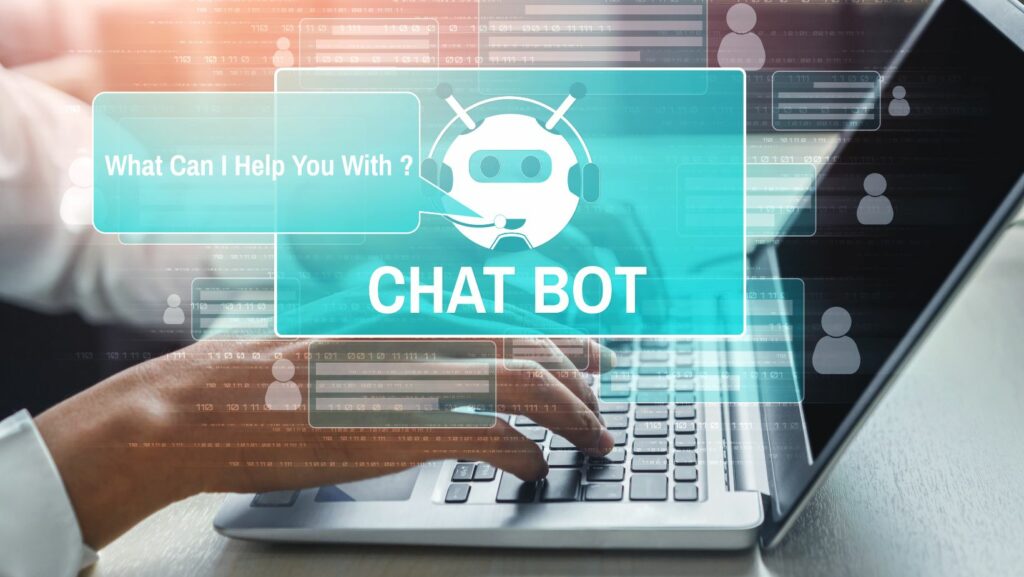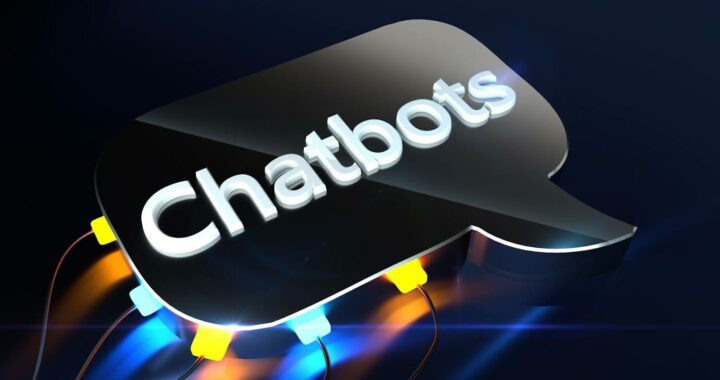
Should Consider Creating a Chatbot
Chatbots have become a vital part of online communication and can provide numerous benefits to businesses of all sizes when used effectively. Here’s a guide on how to create a chatbot:
1. Define the purpose of the chatbot and the problems it will solve.
2. Choose a chatbot-building platform that best fits your needs. Some popular platforms include Dialogflow, ManyChat, and Tars.
3. Design the conversation flow, choosing the type of questions your chatbot will ask and the information it needs to provide to the user.
4. Integrate your chatbot with your website or app to enable seamless communication with your audience.
5. Test your chatbot thoroughly and make sure it works efficiently by letting people test and give feedback.
By creating a chatbot for your business, you can enhance customer service, increase engagement, and achieve a competitive edge.
How to Create a Chatbot
Chatbots are computer programs designed to simulate conversations with human users. They can be used in a wide range of applications, from customer service to marketing and even to automate tasks.
Creating a chatbot can be a great way to increase customer engagement and improve customer service.
In this article, we will explore the basics of chatbot creation and the benefits that it can provide.
What is a Chatbot?
A chatbot is a computer program designed to simulate human conversation through voice or text. Chatbots can be used for a variety of purposes, such as customer service, assistance with online transactions, or as a personal assistant. They work by responding to user prompts with predetermined answers or actions, which are typically based on machine learning and natural language processing algorithms.
Businesses should consider creating chatbots as they offer a range of benefits such as 24/7 availability, reduced wait times, and scalability. Moreover, chatbots can handle simple, repetitive tasks, freeing up customer service staff to focus on more complex and high-value interactions.
However, it’s important to note that chatbots are not human and can’t replace the intuition, empathy, and critical thinking that human customer service representatives bring to the table. Therefore, it’s essential to strike a balance between human and chatbot support to deliver a seamless and personalized customer experience.

Types of Chatbots
As businesses continue to seek new ways to interact with their customers, chatbots have become an increasingly popular solution. There are three main types of chatbots which include rule-based chatbots, AI-based chatbots and hybrid chatbots.
Rule-Based Chatbots: These chatbots operate under a set of predefined rules, and therefore can only respond to specific requests, making them less flexible but more predictable.
AI-Based Chatbots: These chatbots use artificial intelligence to understand and interpret user intent, making them more flexible and capable of handling a wider range of user requests.
Hybrid Chatbots: As the name suggests, these chatbots combine the rule-based and AI-based approaches to offer a more versatile and well-rounded user experience.
When considering whether to create a chatbot, businesses should consider the type of chatbot that best suits their needs and the needs of their customers, as well as the level of technical expertise required to build and maintain the chatbot.
Benefits of Using a Chatbot
Chatbots have numerous benefits, making them a valuable tool for businesses and organizations in various industries.
Here are some of the top benefits of using a chatbot:
1. Improved customer service: Chatbots can respond to customer queries and resolve issues 24/7, reducing response times and improving customer satisfaction.
2. Cost-effective: Chatbots are more cost-effective than hiring additional customer service representatives and can handle a higher volume of queries simultaneously.
3. Higher lead generation and conversion rates: Chatbots can provide tailored recommendations and personalized content, increasing user engagement and conversions.
4. Simplified employee support: Chatbots can assist employees with common questions and tasks, streamlining internal processes and reducing workload.
5. Data collection and analysis: Chatbots can collect and analyze customer data, providing valuable insights for businesses to refine their strategies and offerings.
Pro Tip: When creating a chatbot, ensure that it is user-friendly, conversational, and able to handle diverse user queries effectively to maximize its benefits.
Planning Your Chatbot
Creating a chatbot can be a great way to improve customer service and engagement.
Planning your chatbot correctly is essential for achieving the desired results. In this section, we will discuss the different aspects of planning your chatbot, from deciding which platform to use, to understanding the customer’s needs, to testing the chatbot.
Defining the Purpose of your Chatbot
Defining the purpose of your chatbot is crucial in planning and creating a chatbot that provides value to your audience and achieves your business objectives.
Here are some questions to help you define the purpose of your chatbot:
What problem does your chatbot solve? Identify the pain points your chatbot can help alleviate for your audience.
What are your chatbot’s goals? Determine what actions you want your audience to take when engaging with your chatbot, and what outcomes you want to achieve.
Who is your chatbot’s target audience? Define your audience’s demographics, interests, and needs to create a chatbot tailored to their preferences.
What is your brand voice and tone? Ensure your chatbot’s language and tone align with your brand’s values and personality.
Once you’ve answered these questions, you can create a chatbot that not only benefits your audience but also supports your business objectives, whether that’s generating leads, increasing sales, improving customer support, or enhancing brand awareness.
Understanding Your Customer Needs
Understanding your customer needs is vital to creating an effective chatbot. Before developing a chatbot, it’s essential to identify the needs and goals of your target audience.
Here are some steps to consider:
Identify your target audience: Understanding who your clients are and what they want is vital. Gathering feedback and data from customers will help guide the chatbot development project.
Analyze common customer queries: Research and analyze the common questions that clients ask within your business niche. Understanding your customer’s questions and concerns will help guide the development process.
Prioritize customer needs: Once you have identified your target audience and common customer queries, prioritize their needs. Which issues do your customers request assistance with the most? Ensure your chatbot is capable of handling these concerns first.
Craft meaningful responses: Using the information gathered from customer queries, create chatbot responses that are informative yet straightforward. The tone of the responses should be engaging and represent your brand.
Testing and feedback: Test the chatbot with real customers and gather feedback to improve its performance.
Following these steps will help to create a chatbot that delivers effective customer support and meets your customer’s needs.

Choosing the Right Platform and Tools
When planning to create a chatbot, it’s essential to choose the right platform and tools that align with your objectives and budget. There are several options available, each with its unique features and benefits.
Here are a few things to consider when choosing the right platform and tools for your chatbot:
1. Integrations: Does the platform integrate with your existing systems, such as CRM and marketing automation tools?
2. Hosting: Will you host the chatbot on-premises, or do you need a cloud-based solution?
3. Complexity: What level of complexity does your chatbot need? Do you need a platform with natural language processing capabilities or conversational flows?
4. Pricing: What is your budget? Many chatbot platforms offer different pricing plans and features, so it’s essential to choose one that aligns with your financial plan.
By considering these key factors, you can choose the right platform and tools to make your chatbot creation process easier and more effective.
Pro Tip: Start with a simple chatbot and gradually add more features as needed.
Designing Your Chatbot
Creating a chatbot is an exciting and innovative way to engage with customers and provide an excellent customer experience. To design a chatbot successfully, you must consider the specific needs of your target audience and understand the basics of artificial intelligence.
This section will provide insights on the design process of a chatbot and what considerations should be taken into account.
Creating a Chatbot Flowchart
Creating a chatbot flowchart is an essential step in designing an effective chatbot. A flowchart outlines the conversation tree of your chatbot, organizing a complex set of interactions into a logical sequence that guides the user experience.
To create a chatbot flowchart, follow these steps:
- Identify the main actions you want your chatbot to perform (e.g., book an appointment, answer frequently asked questions, order a product).
- Write out a clear and concise prompt for each action (e.g., “Would you like to book an appointment?”)
- Create branches for each prompt that lead to different follow-up questions or actions based on the user’s response (e.g., “What type of service are you looking for?”)
- Test your flowchart and revise as needed to ensure that the conversation flows naturally and effectively guides the user toward their goal.
Pro Tip: Keep the flowchart simple and easy to follow for the user. Don’t overload the chatbot with too many prompts or options to avoid confusion.
Developing a Personality for Your Chatbot
Developing a personality for your chatbot is crucial in designing an effective and engaging tool for your business. A well-developed personality will enable your chatbot to connect with users on a more personal level and help to differentiate it from other chatbots in the market.
Here are some key tips for creating a personality for your chatbot:
- Define your chatbot’s purpose and audience.
- Create a personality that aligns with your brand and its values.
- Incorporate a conversational tone that reflects your brand’s voice and the preferences of your target audience.
- Give your chatbot a name that humanizes it and is memorable to users.
- Consider using humor or pop culture references to make your chatbot more relatable and personable.
- Test your chatbot’s personality with real users and collect feedback to incorporate into future iterations.
Pro tip: Avoid creating a personality that could offend or alienate users, and be sure to provide clear instructions for users on how to interact with your chatbot.
Writing Conversation Scripts and Responses
When designing a chatbot, it’s important to create conversation scripts and responses that are engaging, informative and on-brand. Here are a few tips for writing effective chatbot scripts and responses:
Understand the user’s intent: It’s important to identify the different types of questions or requests that users may have and craft responses that address those needs.
Keep it concise: Users are looking for quick and easy solutions, so it’s important to keep your responses short and to the point.
Add a personal touch: Including a name or a bit of humor can help create a more engaging and personalized experience for the user.
Test and iterate: Once you’ve created your scripts and responses, it’s important to test them and make adjustments as needed to optimize the user experience.
By following these tips, you can create an effective chatbot experience that engages users and delivers results.
Pro tip: Use natural language and avoid industry jargon to ensure that your chatbot is accessible to users of all levels.

Building Your Chatbot
Building a chatbot can increase customer engagement and provide an improved experience for customers. It can also help automate customer service, provide insights into customer behaviour, and more. Chatbots are becoming increasingly popular and it is possible to create your own without the need for specialist knowledge.
In this section, we will explore the process of creating your own chatbot.
Building Your Chatbot using a Chatbot Platform
If you’re planning to build a chatbot for your business, using a chatbot platform can significantly simplify the process.
Chatbot platforms are software tools that help you create, configure, and deploy your chatbot without the need for technical expertise in coding or artificial intelligence.
Here are some reasons why you should consider building your chatbot using a chatbot platform:
Customization: Chatbot platforms offer a range of customizable templates, drag and drop interfaces, and design tools that allow you to create a chatbot that matches your brand identity and meets your specific business needs.
Easy integration: Chatbot platforms are designed to work with popular messaging apps, such as Facebook Messenger, Slack, and WhatsApp. This makes it easy and seamless to connect your chatbot to your existing communication channels.
Analytics: Chatbot platforms come with built-in analytics tools that let you track user behavior, monitor performance metrics, and gain insights into how to improve your chatbot’s effectiveness.
Pro Tip: Before choosing a chatbot platform, consider factors like pricing, support, scalability, security, and the ability to integrate with third-party applications.
Integrating Your Chatbot with Other Applications
One of the best ways to enhance the functionality of your chatbot is by integrating it with other applications. For businesses, this means making it easier to manage customer interactions and increase the efficiency of their operations.
Here are some popular applications you can integrate with your chatbot:
1. CRM Tools: Integrating your chatbot with your Customer Relationship Management (CRM) tool can help you streamline your customer interactions and manage customer data.
2. eCommerce Platforms: If you’re running an online store, integrating your chatbot with an eCommerce platform like Shopify or WooCommerce can help you provide better customer support and increase sales.
3. Social Media: Integrating your chatbot with social media platforms like Facebook or Twitter can help you reach a wider audience and manage customer inquiries from different channels in one place.
By integrating your chatbot with these applications and others like Zapier, you can create a more robust and efficient chatbot to serve your business needs.
Pro Tip: Before integrating your chatbot with other applications, make sure you have a clear strategy and understand the potential benefits and challenges of each integration.
Testing Your Chatbot
Once you’ve built your chatbot, the next important step is to test it thoroughly to ensure it is working as intended and providing a seamless experience to users.
Here are a few things to keep in mind when testing your chatbot:
- Test all possible scenarios and user inputs to see how the chatbot responds.
- Ensure that the responses are grammatically correct, error-free, and relevant to the user’s query.
- Check if the chatbot is able to understand and respond to different languages and accents, particularly if you’re targeting an international audience.
- Evaluate the user experience and identify areas of improvement, such as simplifying the language or making the navigation more intuitive.
- Testing your chatbot is an ongoing process, and you should continue to tweak and refine it based on user feedback and changing requirements. Pro Tip: Enlist the help of beta testers or real users to get more accurate feedback and ensure a better user experience.
Launching Your Chatbot
Launching your chatbot can be a great way to improve customer support and engagement. A chatbot can provide an automated response to customer inquiries quickly and conveniently. It can also help you increase customer loyalty and satisfaction.
In this article, we will talk about how to create a chatbot and the steps you need to take for a successful launch.
Preparing for Launch
Before launching your chatbot, there are several things you should consider to ensure its success.
First, determine the purpose of your chatbot and what tasks it will perform. This will help you identify what features and capabilities your chatbot will need to have.
Second, choose a platform or service to build and host your chatbot. Consider factors like cost, ease of use, and integration capabilities.
Third, design your chatbot’s conversation flow and user interface, keeping in mind your target audience and their preferences.
Fourth, test your chatbot thoroughly before launch, checking for errors and making sure it performs as intended.
Fifth, promote and market your chatbot to your target audience through various channels like social media and email marketing.
By taking these steps in preparing for launch, you’ll be more likely to create a successful and effective chatbot.
Promoting Your Chatbot
When launching your chatbot, it is essential to promote it to your target audience to ensure it receives maximum exposure and engagement.
Here are some ways to promote your chatbot:
1. Social Media: Share posts across all social media platforms, including Facebook, Twitter, and LinkedIn. Announce the launch of the chatbot and explain how it can help users solve their problems.
2. Email Campaigns: Send out an email campaign to your mailing list, letting them know about the chatbot and how it can assist them.
3. Website Integration: Add a call-to-action button on your website that directs users to the chatbot. This way, visitors to your website who are interested in learning more can easily use your chatbot.
By implementing the above strategies, you can reach your target audience and promote your chatbot effectively. As a pro tip, make sure to monitor your chatbot’s performance and continuously gather feedback from your users to improve the chatbot’s functionality.
Analyzing and Improving Your Chatbot
Before launching your chatbot, it is essential to analyze and improve its performance to provide the best user experience. Here are some tips on how to do it effectively:
Analyze user interactions and feedback to identify areas of improvement. You can use chatbot analytics tools to track user conversations, common queries, and user satisfaction scores.
Improve your chatbot’s natural language processing (NLP) capabilities, as it’s the core of its functioning. Ensure that the chatbot understands the nuances of the language and can interpret user’s queries effectively.
Train your chatbot regularly to keep it updated with the latest information.
Use an engaging tone and personality to make your chatbot unique, friendly, and approachable.
Test your chatbot against real users to ensure that it is functioning correctly and improving user experience.
Follow these tips and make sure your chatbot is ready to provide a seamless experience to your customers.
Pro Tip: Always remember to provide users with human support options as not all queries are resolvable through chatbot.
Conclusion: Why Creating a Chatbot is Essential for Your Business
Creating a chatbot is an essential step for any business looking to improve customer engagement, streamline operations and save costs. With the current advancements in chatbot technology, it has become simpler and cost-effective to create chatbots on various messaging platforms such as Facebook Messenger, Slack, and WhatsApp.
Chatbots enable businesses to provide their customers with quick and targeted responses, and they can handle a large volume of inquiries and FAQs without any delay. Chatbots can provide 24/7 service, increasing customer satisfaction and loyalty, and can also be used to collect user data and feedback.
By creating a chatbot, businesses can automate routine tasks and processes, which helps free up their staff to concentrate on more critical business areas. Any business owner who wants to remain ahead of the curve and simplify their operations should consider creating a chatbot.





